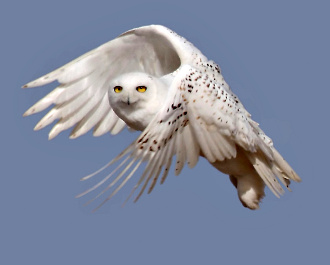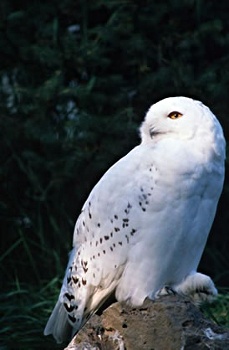Snowy Owl

Snowy Owl Information
Length: 20 - 27"
Habitat: In summer, Arctic tundra. In winter, open country such as marshes, coastal beaches, dunes, open fields, farmland, airports.
Diet: In the Arctic, mostly lemmings. In New England, small mammals such as mice, voles, rats, rabbits, and squirrels. Also some birds, including ducks, shorebirds, and songbirds.
Interesting Facts about the Snowy Owl
- Unlike most other owls, the Snowy Owl hunts mainly during the daytime.
- The Snowy Owl's breeding habitat is open tundra, from just above the treeline and continuing to higher elevations.
- Depending on the abundance of food, many of these owls remain on their breeding territory throughout the year. However, some of them migrate further south and are seen in the very northern parts of the United States, including northern New England.
- In some years, a much larger number of Snowy Owls migrate southward during the winter. The reason for this is uncertain, but it is thought that this may be due to a temporary decrease in the lemming population, the main food source for this bird in the Arctic.
- This large owl remains mostly silent except during the breeding season, when the male makes a loud, booming hoot that can be heard for quite a distance. The Snowy Owl also makes barking and hissing sounds.
- The Snowy Owl does not mate for life but instead remains monogamous for only one breeding season.
Snowy Owl

© arttoday.com
Snowy Owl
Identification Tips
- Wingspan: 55 inches
- Large, diurnal, predatory bird
- Large, rounded head
- Yellow eyes
- Entirely white plumage with scattered dark spots
- Immatures are boldly barred with black
- Sexes similar
(Credit: U. S. Geological Survey)
Snowy Owl
Range Maps from Cornell
Snowy Owl
breeding, winter and year-round range![]()
Includes separate map of sightings.
Snowy Owl
Christmas Bird Count Map
Historical CBC Map from USGS